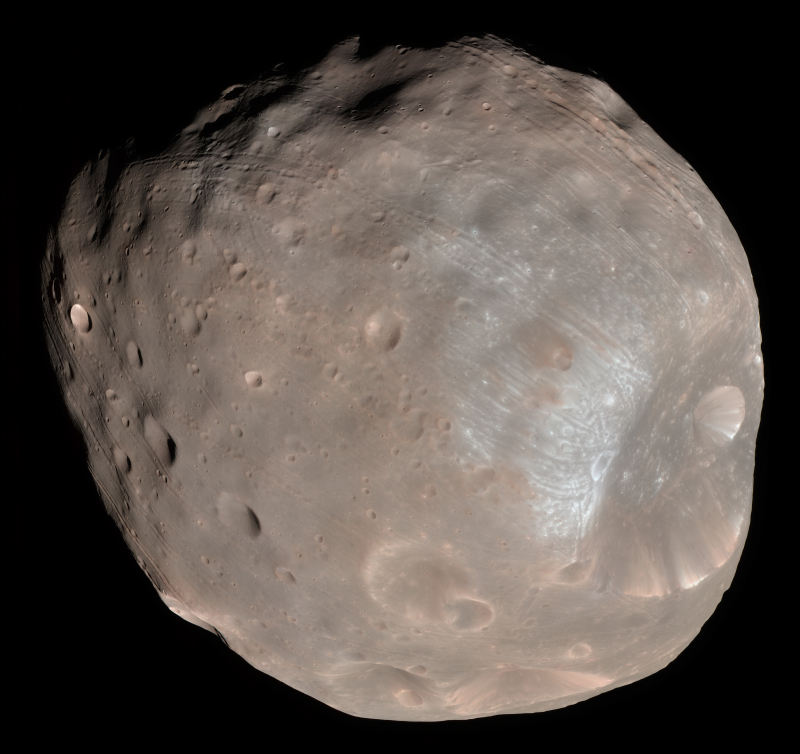The Moons of Mars

We have a reasonably decent understanding of Mars thanks to recent spacecraft that have visited the planet. But its moons tell a completely different tale. The two moons Phobos and Deimos, which have diameters of 17 and 9 miles, respectively, are among the strangest in the Solar System. Although that's really all we know about them, their size and composition give them the appearance of asteroids rather than moons.
Although some scientists do think that they are fragments of a larger moon that once existed a few million years ago, we don't know where any of them came from. Others contend that Phobos and Deimos' composition places them closer to a group of asteroids found in the asteroid belt, indicating that they have extrasolar origins.
Phobos and Deimos are minor moons compared to the Earth's Moon. Deimos is 12.6 km (7.8 mi) broad and weighs 2.0 1015 kg, while Phobos has a diameter of 22.2 km (13.8 mi) and a mass of 1.08 1016 kg. With an orbital period of 7.66 hours and a semi-major axis of 9,377 kilometers (5,827 miles), Phobos orbits Mars more closely than Deimos, which has an orbital period of 30.35 hours and a semi-major axis of 23,460 kilometers (14,580 kilometers).











